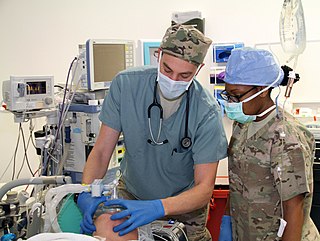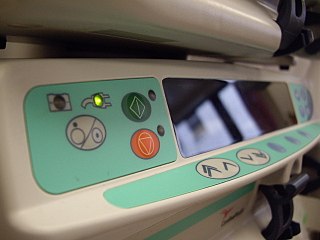Background
Perioperative medicine encompasses the care of the patient preparing for, having and recuperating from surgery. In the practice of perioperative medicine the surgeon, anesthesiologist, intensivist and medical consultant work in concert. The medical knowledge distinct to this field includes that of operative risk and complications, of patient specific risks, of methods to reduce risk, and of the management of medical illness during this time period. Evidence supporting best practices in perioperative medicine is expanding, though historically this field has been directed by common practice and experience. It remains a field governed primarily by the art of medicine.
Notably, in the last decade, there has been a concerted effort by various anesthesia representative bodies to incorporate greater teaching into management of patients during the perioperative period. Specifically, annual summits have been held in the UK and US for a number of years, various courses exist to encourage this field of medicine and there is a PubMed listed journal dedicated to the field of Perioperative Medicine.

Anesthesia or anaesthesia is a state of controlled, temporary loss of sensation or awareness that is induced for medical or veterinary purposes. It may include some or all of analgesia, paralysis, amnesia, and unconsciousness. An individual under the effects of anesthetic drugs is referred to as being anesthetized.

General anaesthesia (UK) or general anesthesia (US) is a method of medically inducing loss of consciousness that renders a patient unarousable even with painful stimuli. This effect is achieved by administering either intravenous or inhalational general anaesthetic medications, which often act in combination with an analgesic and neuromuscular blocking agent. Spontaneous ventilation is often inadequate during the procedure and intervention is often necessary to protect the airway. General anaesthesia is generally performed in an operating theater to allow surgical procedures that would otherwise be intolerably painful for a patient, or in an intensive care unit or emergency department to facilitate endotracheal intubation and mechanical ventilation in critically ill patients. Regardless of whether a patient may prefer to be unconscious or not, certain pain stimuli could result in involuntary responses from the patient that may make an operation extremely difficult. Thus, for many procedures, general anaesthesia is required from a practical perspective.

Anesthesiology, anaesthesiology, or anaesthesia is the medical specialty concerned with the total perioperative care of patients before, during and after surgery. It encompasses anesthesia, intensive care medicine, critical emergency medicine, and pain medicine. A physician specialized in anesthesiology is called an anesthesiologist, anaesthesiologist, or anaesthetist, depending on the country. In some countries the terms are synonymous, while in other countries they refer to different positions and anesthetist is only used for non-physicians, such as nurse anesthetists.
Perioperative mortality has been defined as any death, regardless of cause, occurring within 30 days after surgery in or out of the hospital. Globally, 4.2 million people are estimated to die within 30 days of surgery each year. An important consideration in the decision to perform any surgical procedure is to weigh the benefits against the risks. Anesthesiologists and surgeons employ various methods in assessing whether a patient is in optimal condition from a medical standpoint prior to undertaking surgery, and various statistical tools are available. ASA score is the most well known of these.
A post-anesthesia care unit, often abbreviated PACU and sometimes referred to as post-anesthesia recovery or PAR, or simply recovery, is a part of hospitals, ambulatory care centers, and other medical facilities. Patients who received general anesthesia, regional anesthesia, or local anesthesia are transferred from the operating room suites to the recovery area. The patients are monitored typically by anesthesiologists, nurse anesthetists, and other medical staff. Providers follow a standardized handoff to the medical PACU staff that includes, which medications were given in the operating room suites, how hemodynamics were during the procedures, and what is expected for their recovery. After initial assessment and stabilization, patients are monitored for any potential complications, until the patient is transferred back to their hospital rooms.
The perioperative period is the period of a patient's surgical procedure. It commonly includes ward admission, anesthesia, surgery, and recovery. Perioperative may refer to the three phases of surgery: preoperative, intraoperative, and postoperative, though it is a term most often used for the first and third of these only - a term which is often specifically utilized to imply 'around' the time of the surgery. The primary concern of perioperative care is to provide better conditions for patients before an operation and after an operation.
The American Society of Anesthesiologists (ASA) is an educational, research and scientific association of physicians organized to raise the standards of the medical practice of anesthesiology and to improve patient care.

An anesthetic technician is an healthcare professional who performs a patient care role predominantly with the administration and monitoring of anesthesia and has an extensive knowledge of anesthesia techniques, instruments, supplies and technology.
The ASA physical status classification system is a system for assessing the fitness of patients before surgery. In 1963 the American Society of Anesthesiologists (ASA) adopted the five-category physical status classification system; a sixth category was later added. These are:
- Healthy person.
- Mild systemic disease.
- Severe systemic disease.
- Severe systemic disease that is a constant threat to life.
- A moribund person who is not expected to survive without the operation.
- A declared brain-dead person whose organs are being removed for donor purposes.
In the United States, anesthesia can be administered by physician anesthesiologists, an anesthesiologist assistant, or nurse anesthetist.
Veterinary anesthesia is anesthesia performed on non-human animals by a veterinarian or a Registered Veterinary Technician. Anesthesia is used for a wider range of circumstances in animals than in people, due to animals' inability to cooperate with certain diagnostic or therapeutic procedures. Veterinary anesthesia includes anesthesia of the major species: dogs, cats, horses, cattle, sheep, goats, and pigs, as well as all other animals requiring veterinary care such as birds, pocket pets, and wildlife.
Cardiothoracic anesthesiology is a subspeciality of the medical practice of anesthesiology, devoted to the preoperative, intraoperative, and postoperative care of adult and pediatric patients undergoing cardiothoracic surgery and related invasive procedures.
David L. Reich is an American academic anesthesiologist, who has been President & Chief Operating Officer of The Mount Sinai Hospital, and President of Mount Sinai Queens, since October 2013.
Geriatric anesthesia is the branch of medicine that studies anesthesia approach in elderly.
Neurosurgical anesthesiology, neuroanesthesiology, or neurological anesthesiology is a subspecialty of anesthesiology devoted to the total perioperative care of patients before, during, and after neurological surgeries, including surgeries of the central (CNS) and peripheral nervous systems (PNS). The field has undergone extensive development since the 1960s correlating with the ability to measure intracranial pressure (ICP), cerebral blood flow (CBF), and cerebral metabolic rate (CMR).
Certified anesthesiologist assistants (CAAs) are highly trained master’s degree level non-physician anesthesia care providers. CAAs are integral members of the anesthesia care team as described by the American Society of Anesthesiologists (ASA). This designation must be disambiguated from the Certified Clinical Anesthesia Assistant (CCAA) designation conferred by the Canadian Society of Respiratory Therapists. All CAAs possess a baccalaureate degree, and complete an intensive didactic and clinical program at a postgraduate level. CAAs are trained in the delivery and maintenance of all types of anesthesia care as well as advanced patient monitoring techniques. The goal of CAA education is to guide the transformation of student applicants into competent clinicians.
Eye injuries during general anaesthesia are reasonably common if care is not taken to prevent them.
Preanesthetic assessment is a medical check-up and laboratory investigations done by an anesthesia provider or a registered nurse before an operation, to assess the patient's physical condition and any other medical problems or diseases the patient might have. The goal of the assessment is to identify factors that significantly increase the risk of complications, and modify the procedure appropriately. The aim is to identify the appropriate anesthetic techniques to be used, to ensure the safety of perioperative care, optimal resource use, improved outcomes, and patient satisfaction, while considering the individual and person related risk factors and circumstances. The preanesthetic assessment involves the consideration of information from various sources that include the past medical records, interview, physical examination, as well as results from medical and laboratory tests.

Alex Bekker is a physician, author and academic. He is a professor and chair at the Department of Anesthesiology, Rutgers New Jersey Medical School. He is also professor at the Department of Physiology, Pharmacology & Neurosciences. He serves as the Chief of Anesthesiology Service at the University Hospital in Newark.
Alex Macario is an American anesthesiologist, academic and author. He is a vice-chair for education, a professor in the Department of Anesthesiology, Perioperative and Pain Medicine, and program director for the anesthesiology residency at Stanford University School of Medicine.




